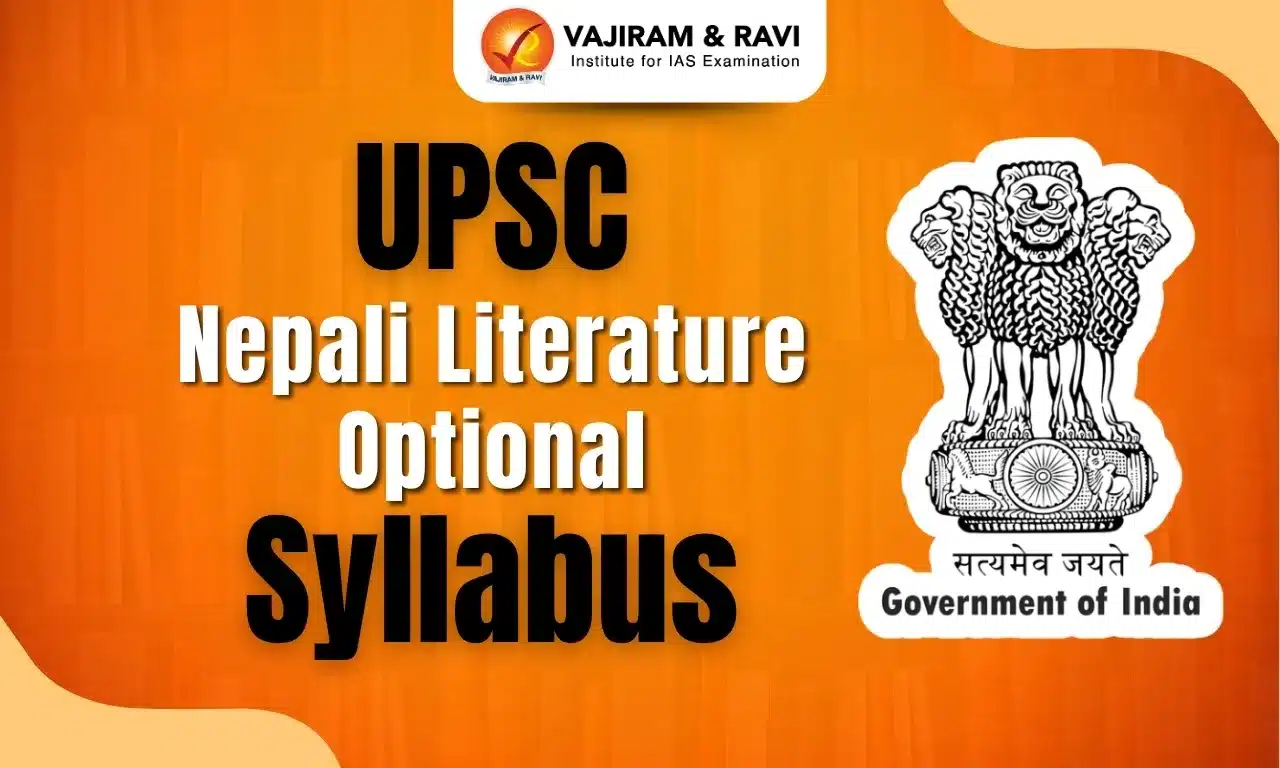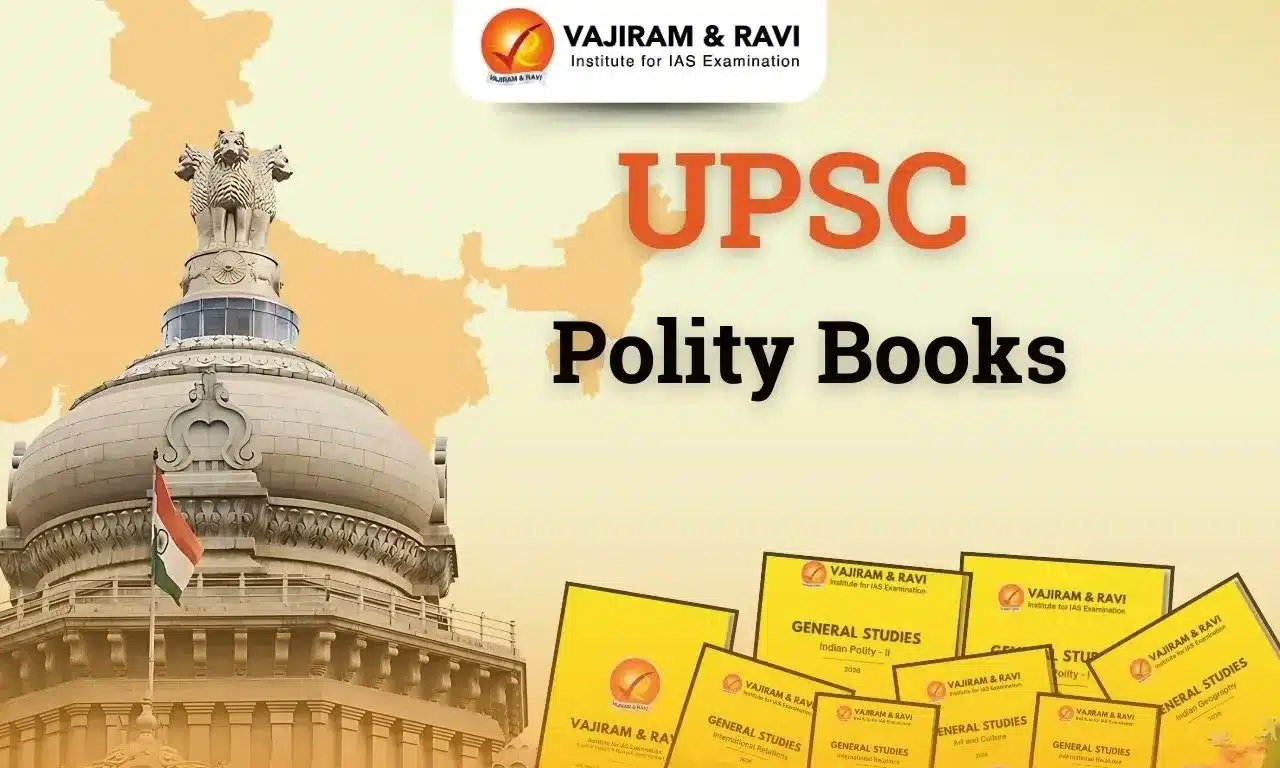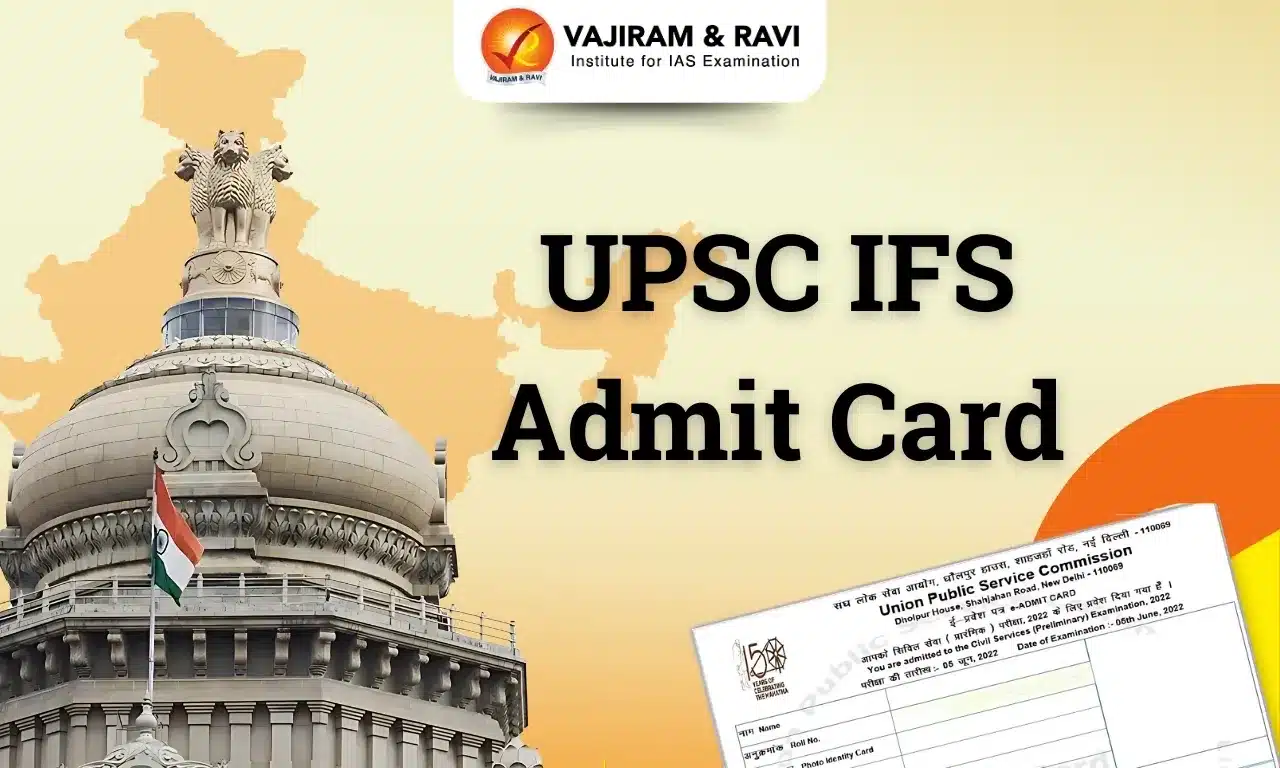UPSC Nepali Literature Syllabus evaluates the knowledge of students in Nepali Language and their in-depth understanding of the tradition that it represents. The syllabus is divided into two papers- Paper 1 and Paper 2 both 250 marks each. While paper 1 covers the historical development as well as classical literature in Nepali, Paper 2 covers modern literature along with critical analysis of literary texts. In this article, we are going to cover about UPSC Nepali Literature Optional Syllabus in detail.
UPSC Nepali Literature Optional Syllabus 2026 Overview
The UPSC Nepali Literature Optional Syllabus 2026 is very vast and includes many topics that test the knowledge of Nepali Literature including literary history, prominent authors and important texts. The Nepali Literature Optional Syllabus provides an all-round perspective of the style of literature, change in language and cultural background. This includes basic genres of poetry, prose, drama and literary criticism for the purpose of critically analysing and appreciating the multiple aspects of Nepali Literature from its primary stages of contemporary developments.
| Overview of UPSC Nepali Optional Syllabus | ||
| Mains Papers | Subject | Marks |
|
Paper VI |
Nepali Literature Optional Paper 1 |
250 |
|
Paper VII |
Nepali Literature Optional Paper 2 |
250 |
|
TOTAL |
500 |
|
|
Time Duration |
3 hours |
|
UPSC Nepali Literature Syllabus for Paper 1
Paper I of the UPSC Nepali Literature syllabus adopts a historical and classical perspective of the language and its literary evolution. It begins with the origin and development of the Nepali language, focusing on its historical roots and linguistic features—including phonetics, morphology, and syntax. The syllabus then explores ancient and medieval Nepali literature, highlighting major works and their cultural significance. Students are expected to critically analyse literary contributions by key figures like Bhanubhakta Acharya and Moti Ram Bhatta, examining their themes, narrative styles, and literary techniques.
A section on folk literature—encompassing fairy tales, legends, and folklore—emphasises the reflection of social values and traditions. The syllabus also includes the study of early forms of Nepali prose and poetry, with detailed attention to the role and contributions of pioneering writers and poets.
| Nepali Language UPSC Optional Syllabus for Paper 1 | |
| Section | Topics of Nepali UPSC Syllabus |
| Section-A | |
|
History & Origin |
History of the origin and development of Nepali as one of the new Indo-Aryan Languages |
|
Fundamentals of Nepali Grammar and phonology: |
Nominal forms and categories: Gender, Number, Case, Adjectives, Pronouns, Avyayas |
|
Verbal forms and categories: Tense, Aspects, Voice, Roots and Fixes |
|
|
Nepali Swara and Vyanjana |
|
|
Major Dialects of Nepali |
Standardisation and Modernisation of Nepali with special reference to language movements (e.g. Halanta Bahiskar, Jharrovad) |
|
Teaching of Nepali language in India |
Its history and development with special reference to its socio-cultural aspects |
| Section-B | |
|
History of Nepali literature |
History of Nepali literature with special reference to its development in India |
|
Fundamental concepts and theories of Literature |
Kavya/Sahitya, Kavya Prayojan, Literary genres, Shabda Shakti, Rasa, Alankara, Tragedy, Comedy, Aesthetics, Stylistics |
|
Major literary trends and movements |
Swachchhandatavad, Yatharthavad, Astitwavad, Ayamik Movement, Contemporary Nepali writings, Postmodernism |
|
Nepali folklores |
Sawai, Jhyaurey, Selo, Sangini, Lahari |
UPSC Nepali Literature Syllabus for Paper 2
Paper II of the UPSC Nepali Literature syllabus focuses on the modern and contemporary developments in Nepali literature. It encompasses the study of modern poetry, drama, prose, and literary criticism, reflecting the evolution of literary thought and expression in the modern era.
This paper examines the growth of modern Nepali poetry, highlighting major poets and their engagement with contemporary themes, societal issues, and stylistic innovations. The modern Nepali drama segment explores the contributions of significant playwrights and their role in shaping theatrical literature and stagecraft.The syllabus also includes a critical study of modern short stories, novels, and essays, with an emphasis on their narrative techniques, thematic depth, and stylistic experimentation. In the domain of literary criticism, it analyses the perspectives of prominent critics and their application of various literary theories.Further, Paper II addresses emerging literary movements, contemporary trends, and the impact of translations, which have helped broaden the reach and influence of Nepali literature in the global context.
| Nepali Language UPSC Optional Syllabus for Paper 2 | ||
| Section | Topics of Nepali UPSC Syllabus | |
|
Section-A |
Author |
Syllabus |
|
Santa Jnandil Das |
Udaya Lahari |
|
|
Lekhnath Poudyal |
Tarun Tapasi(Vishrams III, V, VI, XII, XV, XVIII only) |
|
|
Agam Sing Giri |
Jaleko Pratibimba Royeko Pratidhwani (The following Poems only-Prasawako Chichyahatsanga Byunjheko Ek Raat, Chhorolai, Jaleko Pratibimba : Royeko Pratidhwani, Hamro Akashmani Pani Hunchha Ujyalo, Tihar). |
|
|
Haribhakta Katuwal |
Yo Zinadagi Khai Ke Zindagi: (The following poems only- Jeevan: Ek Dristi, Yo Zindagi Khai Ke Zindagi, Akashka Tara Ke Tara, Hamilai Nirdho Nasamjha, Khai Manyata Yahan Atmahutiko Balidan Ko). |
|
|
Balkrishna Sama |
Prahlad. |
|
|
Manbahadur Mukhia |
Andhyaroma Branch Nehru (The following One-Act only-Andhyaroma Banchneharu ‘Suskera’). |
|
|
Section-B |
Author |
Syllabus |
|
Indra Sundas |
Sahara |
|
|
Lilbahadur Chhetri |
Brahmaputra ko Chheuchhau |
|
|
Rupnarayan Sinha |
Katha Navaratna (The following stories only—Biteka Kura, Jimmewari Kasko, Dhanamatiko Cinema—Swapna, Vidhwasta Jeevan) |
|
|
Indrabahadur Rai |
Vipana Katipaya (The following stories only—Raatbhari Huri Chalyo, Jayamaya Aphumatra Lekhapani Aipugi, Bhagi, Ghosh Babu, Chhutuaiyo) |
|
|
Sanu Lama |
Katha Sampaad (The following stories only—Swasni Manchhey, Khani Tarma Ekdin, Phurbale Gaun Chhadyo, Asinapo Manchhey) |
|
|
Laxmi Prasad |
Laxmi Nibandha DevkotaSangraha (The following essays only—Sri Ganeshaya Namah, Nepali Sahityako Itihasma Sarvashrestha Purus, Kalpana, Kala Ra Jeevan, Gadha Buddhiman ki Guru?) |
|
|
Ramkrishna Sharma |
Das Gorkha (The following essays only—Kavi, Samaj Ra Sahitya, Sahityama Sapekshata, Sahityik Ruchiko Praudhata, Nepali Sahityako Pragati) |
|
UPSC Nepali Literature Syllabus Books
To prepare for UPSC Nepali Literature Syllabus the following books can be read:
- History of Nepali Literature by Chudamani Bandhu
- Bhanubhakta’s Ramayan by Bhanubhakta Acharya
- Manu Madan by Laxmi Prasad Devkota
- Basain by Lil Bahadur Chettri
- Nepali Sahitya ko Itahas by Dr. Taranath Sharma
- Contemporary Nepali Literature by Indra Bahadur Rai
Last updated on January, 2026
→ Check out the latest UPSC Syllabus 2026 here.
→ Join Vajiram & Ravi’s Interview Guidance Programme for expert help to crack your final UPSC stage.
→ UPSC Mains Result 2025 is now out.
→ UPSC Notification 2026 is scheduled to be released on January 14, 2026.
→ UPSC Calendar 2026 is released on 15th May, 2025.
→ UPSC Prelims 2026 will be conducted on 24th May, 2026 & UPSC Mains 2026 will be conducted on 21st August 2026.
→ The UPSC Selection Process is of 3 stages-Prelims, Mains and Interview.
→ UPSC Result 2024 is released with latest UPSC Marksheet 2024. Check Now!
→ UPSC Toppers List 2024 is released now. Shakti Dubey is UPSC AIR 1 2024 Topper.
→ Also check Best IAS Coaching in Delhi
UPSC Nepali Literature Optional Syllabus 2026 FAQs
Q1. Is there any particular book to prepare for the UPSC Nepali Literature syllabus?+
Q2. Where can I download the UPSC Nepali Literature Syllabus?+
Q3. What is the exam pattern of UPSC Nepali Literature?+
Q4. What is the syllabus of UPSC Nepali Literature?+
Q5. How to prepare UPSC Nepali Literature Optional?+

















